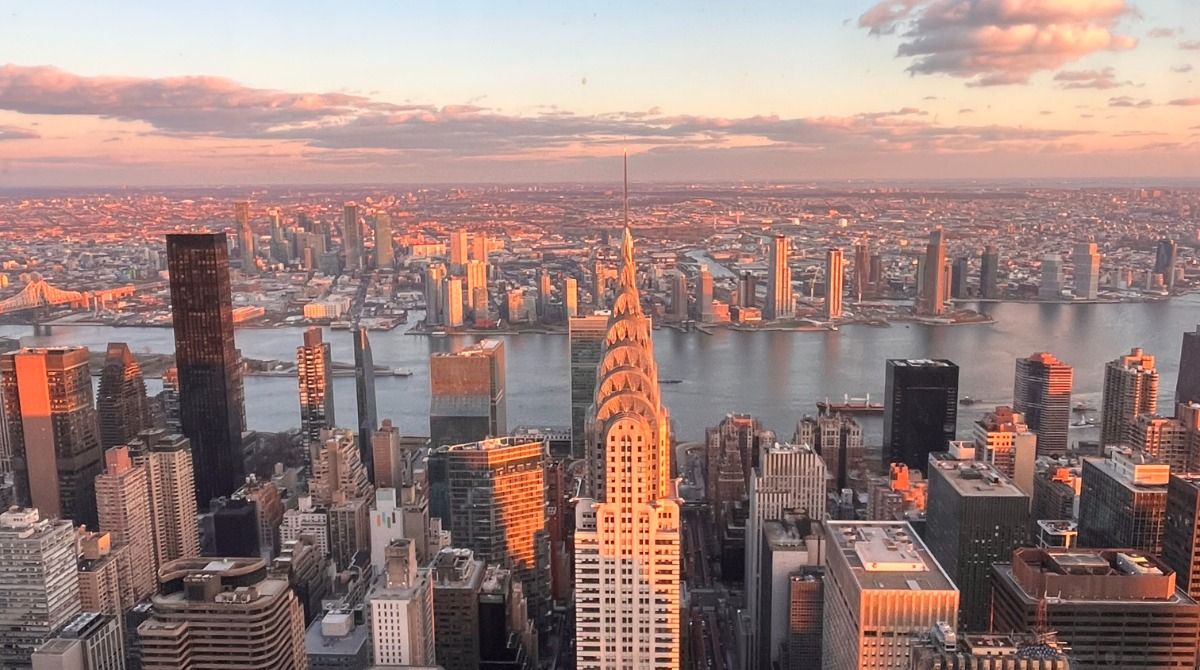Wind gusts reaching up to and over 20 mph may constitute as a “breezy day” for some. But that wind forecast gets turbo-charged for those stepping out on city streets.
No, it’s not your imagination- winds are typically stronger in cities and the science behind it is rather straightforward (at least for the most part). The next time a rogue gust almost sweeps you off your feet in the city, chalk it up to the Venturi effect.
The Venturi effect
Let’s get into the science behind this phenomenon.
Named after the 18th century Italian physicist Giovanni Battista Venturi, the Venturi effect describes how a parcel of air or fluid will increase its forward speed upon flowing through a constricted space, which explains why we see an uptick in wind speeds across many of the nation’s biggest cities.
The model above shows how air flowing through a Venturi tube (a tube with varying widths) will change its speed as it moves through the different widths of the tube. (NASA)
Flow will redirect into the constricted space from an area of high pressure to the area of low pressure.
This increase in speed is because of the decrease in pressure the air or fluid parcel experiences when entering the tighter space. The bigger this change in pressure is, the faster the air will flow. But why does this increase in speed happen?
Related to the Bernoulli Principle, the Venturi effect abides by the law of conservation of energy, which states that energy within a system can’t be created or destroyed, but only transferred.
As flow funnels into a tighter space, more air or fluid molecules compress together, forcing energy to be converted. The potential energy within the molecules will changeover to kinetic energy upon entering the smaller space. This causes an increase in velocity.
Since pressure is inversely proportional to the speed, the parcel is traveling, a drop in pressure will cause an increase in speed. This also infers that the tighter the constriction, the bigger the drop in pressure will be, causing the parcel to move faster the faster through the smaller space.
In meteorology, the Venturi effect is always in action, as topography and manmade infrastructures constantly interrupt boundary layer winds. When this happens, airflow becomes redirected, where it is many of times forced into some sort of valley, canyon or through city streets.
Applying the principle to real life
Notorious for seeing some of the country’s fastest wind speeds, most of the region’s largest cites positioned along the I-95 corridor experience the stronger winds compared to their outlying suburbs.
In particular, Manhattan serves as an excellent spot to witness Venturi’s effect in action.
The island’s nearly perfect grid of streets and avenues lined with multiple story buildings and skyscrapers makes for an ideal setup to verify and support the physics behind the principle- so long as the winds are blowing in the right direction.

A Manhattan sunset capturing only a fraction of the nation’s most dense city. (Photo by Bryce Moullet)
When air, driven by the wind, crashes into a building, airflow becomes redirected as it is forced down and around the side of the infrastructure and into the adjacent streets or “valleys”. The redirected air funneled into these valleys becomes constricted and increases its speed to compensate for the drop in pressure.
This becomes amplified when the wind blows at a direct angle, parallel to the streets or avenues.
The width of the street or avenue is also something to consider as well. Streets that are narrower will experience stronger winds, as opposed to those that are wider.
Of course, there are other factors at play that can promote wind intensity in cities, too. While the Venturi effect accounts for the bulk of the issue, downdrafting from skyscrapers can also generate impactful gusts at the pedestrian level.
While the Venturi effect is noticeable and can cause discomfort at the street level, it can become downright dangerous at elevated heights. That’s why many government agencies and companies have safety regulations in place for workers when the wind’s speed and direction increase the risk of serious injuries.
Our team of meteorologists dives deep into the science of weather and breaks down timely weather data and information. To view more weather and climate stories, check out our weather blogs section.
